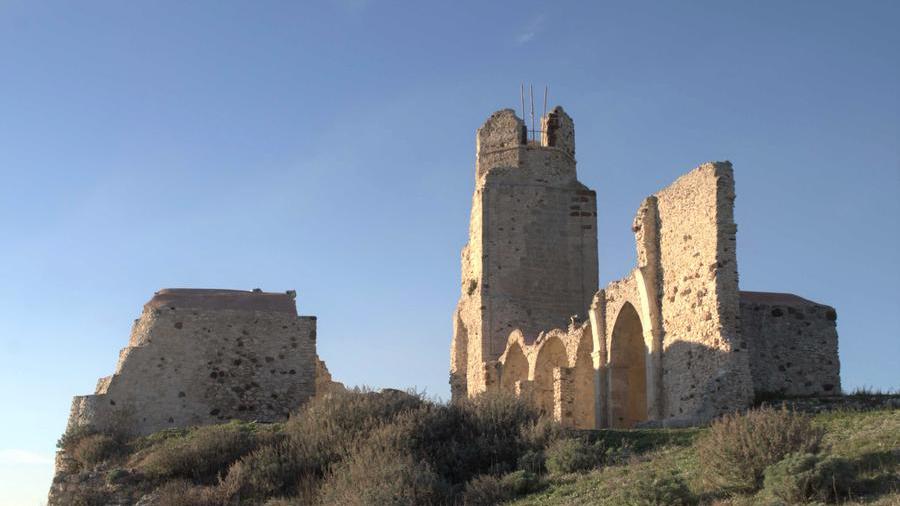The superb castles facing the sea
Anglona is rich in fortifications built by the Doria and Malaspina families in Osilo and Chiaramonti
In addition to the grand castle of the Dorias, which dominates the Gulf of Asinara from the promontory of Castelsardo on which it stands, Anglona is also proud of other medieval fortresses and castles that rise in the innermost part of the territory. Starting with the Malaspina castle in Osilo, a fortress built around the 12th century by the noble Italic family of Lombard origin that gave it its name. Placed on the summit of Mount Tuffudesu (650 m.a.s.l.) to guard the town that stretches at its foot and to garrison the borders between Anglona, Gallura and Nurra the castle later came into the possession of the Aragonese and remained there until 1365, when it was conquered by Judge Mariano d'Arborea. The fortress of Osilo was still at the center of bitter disputes, until the mid-1400s, when it began its slow decline and in 1720 passed, with the whole of Sardinia, under the House of Savoy. Having fulfilled its military function, the castle was abandoned and fell into almost total ruin, until it underwent partial restoration in the early 1960s.
Although located in a very important strategic position, the castle was not large in size with an internal area of about 1,000 square meters. All that remains today of the original fortress are the two towers and the walls. The castle can be reached through the narrow streets of the historic center of Osilo still cobbled. From the large terrace there is an extraordinary view of a large part of northwestern Sardinia and the Gulf of Asinara.
Another very ancient castle stands at the top of San Matteo hill overlooking the town of Chiaramonti. Built around 1100 by the Genoese Doria family, the fortress was conquered by the Aragonese in 1348 by Rambaldo di Corbera but then in 1350 was returned to Brancaleone and Matteo Doria by the king of Aragon. Later assigned to the archbishop of Arborea it was then ceded probably in 1443 to the Sassarese Angelo Cano by whom it was abandoned and left to fall into ruin. On its ruins the parish church of San Matteo was built. Even to reach this castle one has to cross the historic center of the town and its narrow streets that are reminiscent in their structure of the Genoese carrugi, so much so that one of them is still called Carruzzu longu by the villagers. Once you reach the top, you can enjoy a vast panorama that sweeps from Mount Sassu to Limbara, from Mount Ruju to Mount Alma and the fertile valleys of Martis, Laerru, Perfugas and Nulvi, and on clear days, allows glimpses of the Corsican mountains.
Another fascinating medieval fortification is the fortress of Casteldoria, which stands in the territory of Santa Maria Coghinas, also at the center of events involving Genoa, the Crown of Aragon, the Arborea, the Malaspina and the wars of the Sardinian giudicati. As its name recalls, it was built around the 12th century by the Doria family, which had strong interests in northern Sardinia, including the important Castelsardo. From the mid-14th century the fortress, along with that of Chiaramonti fell into Aragonese hands, occupied by Rambaldo de Corbera on behalf of King Peter IV of Aragon in 1354. The castle then passed to Eleonora d'Arborea until the early 1400s, but in the following centuries it passed through many hands and many rulers, suffering, however, a slow decline that led it in the early 1700s to be sacked, demolished and damaged by the Piedmontese who settled on the island.
The fortification with a strongly Genoese character is today in a state of semi abandonment and is located on top of a cliff called Monti di lu Casteddu or also Monti Urtigiu, at about 220 m a.s.l. It can be reached from the provincial road that connects Santa Maria Coghinas to Perfugas by taking a dirt road to the left. The tower with its pentagonal shape exceeds 20 meters in height. Along with it and the perimeter walls are visible other materials and especially the remains that refer to the ancient village that arose, most likely, at the same time as the castle in the second half of the 1200s. «The presence of the castles in Anglona is doubtless one of the aspects that stand to signify the importance of this territory since time immemorial – explains Giovanni Ligios, president of the Union of Municipalities Anglona and Lower Coghinas Valley – and among the objectives of our entity there is certainly to network them and make them usable. Already in August it will be possible through the sponsorship of the Union of Municipalities».

